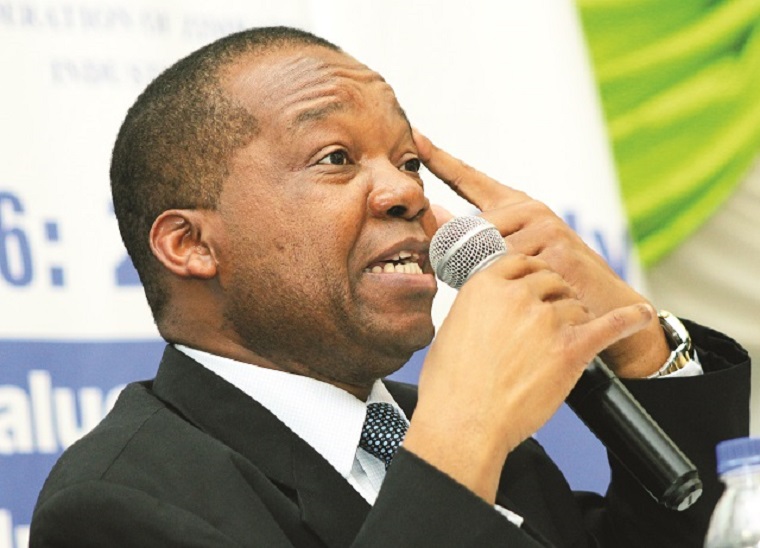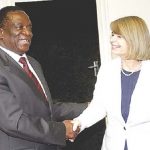 When Zimbabwe’s central bank chief John Mangudya announced his monetary policy last week, the majority of Zimbabweans did not expect major policy interventions and shocks.
When Zimbabwe’s central bank chief John Mangudya announced his monetary policy last week, the majority of Zimbabweans did not expect major policy interventions and shocks.
That’s because in the days leading up to his monetary policy statement on 20 February, Mangudya had denied claims by former Finance Minister Tendai Biti that the government wanted to introduce a new currency immediately.
The fundamentals are not yet right and the claims without basis, Mangudya said.
And then, half way into his six-minute presentation, the central bank head did exactly the opposite.
With immediate effect, bond notes and all electronic money, would be merged into a new currency to be called the RTGs dollar with a fixed exchange rate 1:1 parity policy on the surrogate bond note currency and the US dollar for a managed floating system.
The RTGS dollar, which derives its name from the country’s interbank online payment platform, Real Time Gross Settlement, had come unexpectedly.
Under the new rules, the country’s surrogate currency made up bond notes and coins and all electronic money including mobile money, would now be categorized under the RTGs currency.
The RTGs could be seen as a safer and less risky bet for Mangudya in a country with a traumatic history of hyperinflation.
Zimbabwe adopted the use of a basket of strong international currencies led by the US dollar in 2009 to end an unprecedented period of hyperinflation that devastated the value of the Zimbabwean dollar.
For now, this latest currency gamble seems to have paid off with some local economists describing the central bank’s move as a “bold and progressive” step towards fixing the country’s problems.
“In our view, the formalization and provision of a formal foreign exchange market is a positive development which should result in an efficient natural allocation of foreign currency amongst economic sectors as the earlier model where the central bank allocates foreign currency was unsustainable,” Invictus Securities said last Friday in its research note.
Although the central bank has hinted on the existence of lines of credit to support supply of forex, sustainability of the supply side remains an uphill task in light of the country’s limited export revenues.
A lack of investment by manufacturers over the years of economic uncertainty has led to low capacity utilization and that, plus low output from the agriculture sector, has hampered Zimbabwe’s ability to generate foreign exchange. Zimbabwe normally gets 60% of its export revenue from mineral sales with the remainder coming from tobacco and horticulture.
A shift from a 1:1 exchange rate between the bond note and the greenback was an important step to ensure efficiency in the valuation of the currency, analysts said.
In a post policy note, IH securities said the introduction of a managed floating exchange rate system was also a positive step towards improving competitiveness with the domestic market and sanitizing the foreign exchange market.
Others accuse Mangudya of leading a sophisticated plan to disenfranchise ordinary Zimbabweans of their US dollar savings running into billions of dollars by maintaining an illusory parity policy between the US dollar and the bond note even while the parallel market was paying a premium of 400% for the dollar.
“The monetary policy statement is a disaster that will erode livelihoods, plunge the nation into darkness and uncertainty,” said Nelson Chamisa, Zimbabwe’s main opposition leader.
Economists are also not convinced by the central bank’s latest move saying there is a need for sufficient lines of credit and to build reserves from exports to support the exchange rate.
Without adequate foreign currency reserves, meaningful foreign direct investment and lines of credit, the RTGs dollar will always be under pressure against the US dollar, says Harare-based independent economist Godfrey Kanyenze.
Apart from currency reserves, confidence in the new currency remains very low owing largely to policy inconsistencies on the part of President Emmerson Mnangagwa’s government and the country’s recent history that saw value of deposits and savings being decimated at the height of hyperinflation.
On Friday, the RTGs dollar weakened against the US dollar on the interbank managed floating system introduced this week with the unit being sold at $1:2.5 RTGs.- Quartz
(810 VIEWS)


